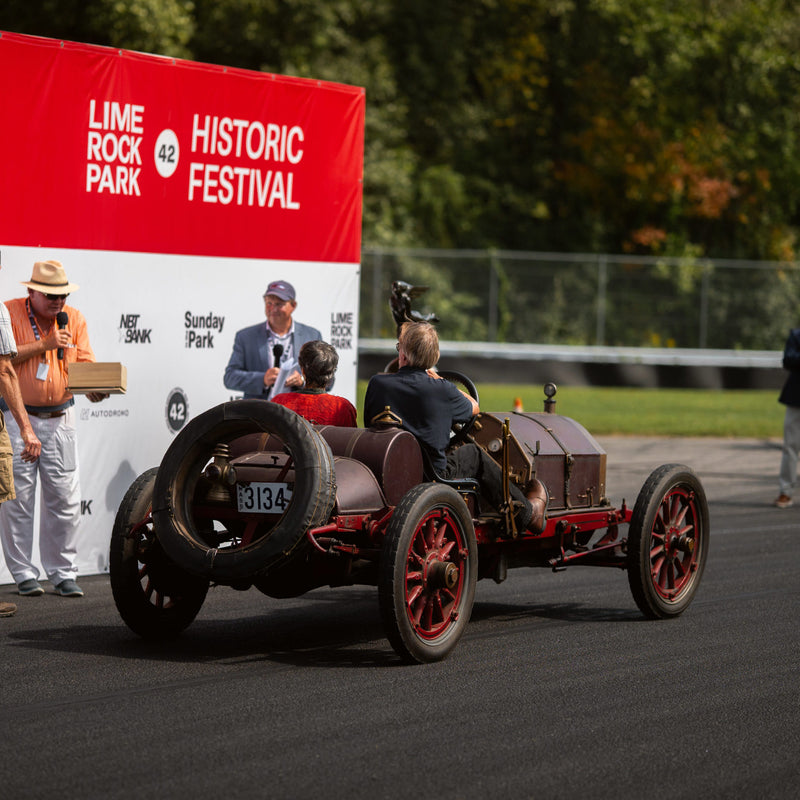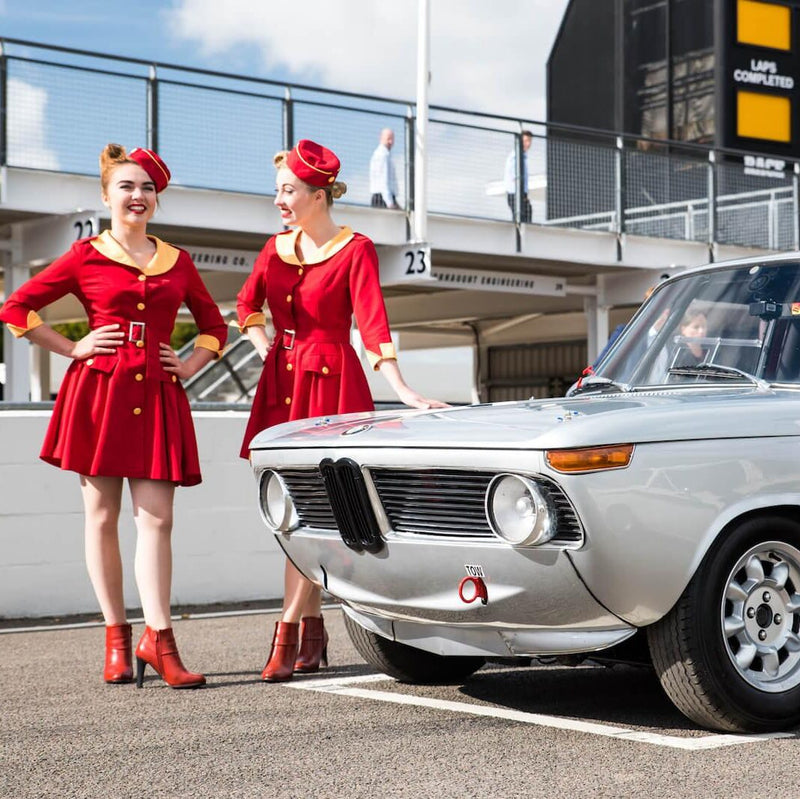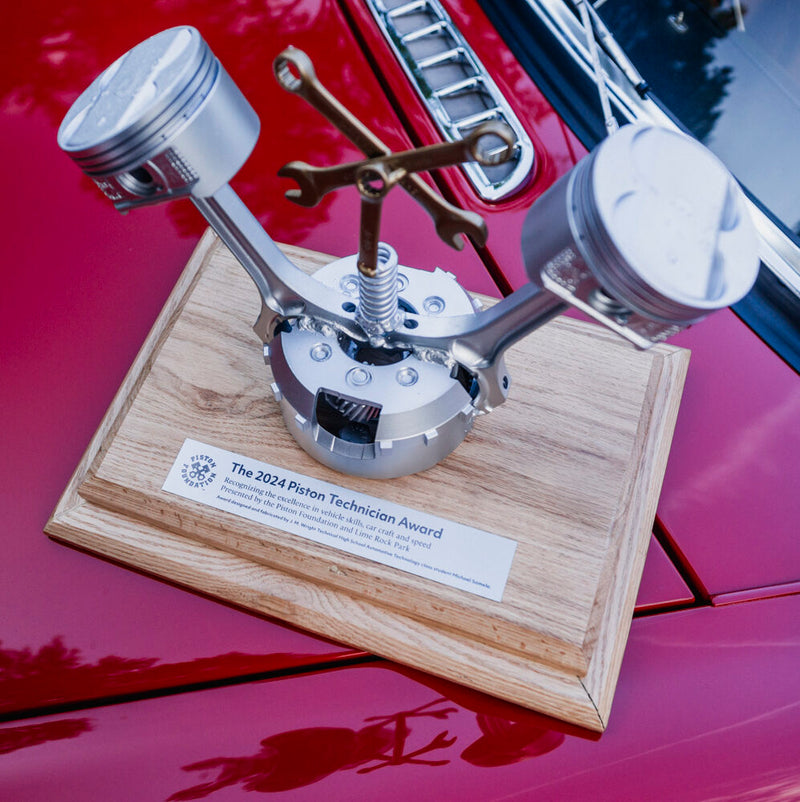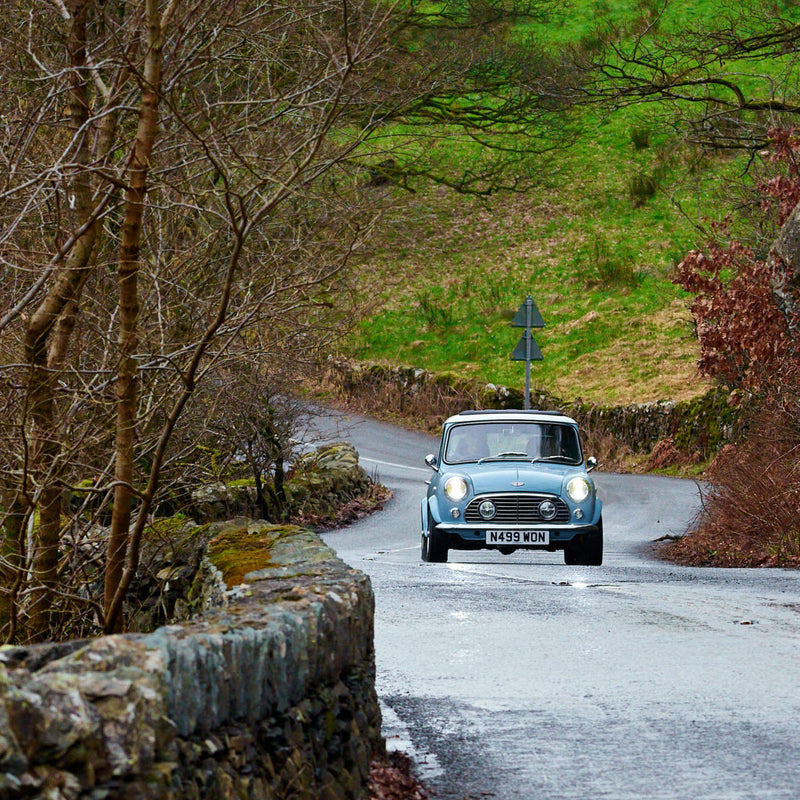Everything is overseen by Esposito whose love, knowledge, and passion for the marque go back almost as long as he’s been working on cars, and over the years this ASE certified Master Technician has built a reputation for being a bit of a perfectionist.Petrolicious wanted to find out more about this master body man whose customers come to him from far and wide to work on their cars, and Esposito was kind enough to sit down with us, now more than four decades removed from his first job reshaping and fixing mangled metal.


First, the body shop of yesteryear is not your body shop of today, and rest assured that while Esposito and others of his ilk have been in the business a long, long, time by any stretch of the imagination, their methodologies have changed and adapted. Leaps forward in technology have heralded innovative advances in paint and material technology which have undoubtedly improved the quality of collision repairs and restorations. Entering the workshops you see evidence of this—state of the art spray booth, jigs, and tools. Everything is clean and neatly organized, as are the customer cars waiting for their turn in line, lain out before us in neat rows, many under protective covers. Loose parts are bagged, tagged, and nearby.
"Nobody teaches you. There’s no schools for bodywork and paint. You could go to an occupational school, but you’re not going to learn much there,” says Esposito. “No, what you have to do is work in a bodyshop, work under someone who will train you.Boom . Six months later, and you’ll be painting. It’s an acquired skill.” That’s what he told me when I asked him about how one learns the trade, and one thing that hasn’t changed terribly too much from when Esposito started.
Esposito’s father was a mechanic, and young John would more than occasionally go to work with him. It was here he would also learn that if a job was worth doing, it was worth doing right. “He was a master engine builder and a master mechanic. And I learnt a lot from him in how to do things right. I’d go to work with him, and the first thing I’d always seem to do is go to the solvent tank and scrape gaskets off of valve covers. Then, I’d clean them all up, and lay them on the bench. And he’d go ‘What’s this? Dirt?’ I’d say, ‘No one’s going to see it’. He’d get all mad and say ‘I see it. I don’t care if no one else see it, I see it. It has to be perfect.' Anything he’d do, he’d clean it up really nice, and paint it. Also, that way, if the customer came back with it, he’d know he did it.”



While Esposito wanted to do something with cars, he didn’t want to follow exactly in his father’s footsteps either. “I never had a desire to be a mechanic. It wasn’t even that I wanted to do bodywork. What happened was when I was growing up we went to the custom car and motorcycle shows and I’d see those beautiful paint jobs. What intrigued me the most was those paint jobs. When I was able to start doing my own stuff, and I bought my first car, a ’63 Chevrolet Impala which was my first car, I definitely knew I wanted to bodywork, but moreover I wanted to paint. “
But how did Esposito settle on Porsche as the make he would eventually solely concentrate and specialize in? “It’s interesting, as my dad did all domestic cars, mostly Buick and Cadillac. But one day he said there was a guy down at his shop who had a Porsche that was damaged in the front and wanted to know if I could fix it. And I was shocked because he was very biased. He had a hatred for foreign cars. And so they brought the car to my house. And it was a ’69 911S and it was Aubergine. And that was the first Porsche I worked on. That was in 1972.”
But that wasn’t the turning point for Esposito, at least as far as the marque was concerned. “I was working at a shop out in Canoga Park and on the property there was a 356A coupe on flat tires. It was Ivory with red interior. And one day I looked at the car…mind you I had already worked on a lot of Porsches by this point…but I looked at that 356 one more time, walked around, got in the door, and I was done. That was it. I couldn’t believe it. I got goosebumps. I was intrigued with that car…the smell… so much so that I bought it. I paid $1,250 for it. And I drove it for a week and the transmission blew up. I had no money to fix it, but I wanted to restore it. But that is where I got bit with that little Ivory car. I loved that car.”

Cupid’s (Porsche) Arrow firmly lodged, Esposito proceeded to get his hands on anything piece of material he could about the German car maker, and the man who started it, Dr. Ferdinand Porsche, as well as buying and trading more than a few 356s over the years. This proved to be an education in itself. At the same time he would alternately work both for himself, and at a plethora of Los Angeles area body shops, mostly handling heavy line (heavy collision) repairs, and continue to hone his craft and convictions. “I needed to have something really, really crashed to have any interest in pulling and repairing it properly. Otherwise, it would bore the hell out of me.”
Esposito also learned that life in the repair business was difficult. “Being in bodywork is a struggle. An amazing struggle. Pretty much any shop I ever worked, it was a struggle to make any money at all. Just a constant struggle to earn a living. They treat you like shit. They won’t let you work on your own car, they don’t let you do any side jobs. They don’t give you insurance. They don’t give any vacation, no time off. Just really, really tough.”
In 2009, Esposito was unceremoniously fired from his job at a bodyshop after complaining just a little too much to management about conditions there. Esposito would find himself out of full-time work for the first time in a long time in a bad economy, but the way he tells it, it was the best thing his former employers could have done for him. He had a little workshop in Northridge to call his own, and to do work on the side, while perhaps more importantly he could count on getting work from “Tony”.That Tony is Tony Gerace ofTLG Auto , now Esposito’s neighbor across the alley in North Hollywood.


Almost 28 years ago, a client of Gerace’s wanted a Turbo conversion performed on a ’79 911 Coupe, and a longtime friendship was born. So, in 2009, at just the right time, the mechanic would call the newly freed-up body man about a 1969 911S that was in need of a full a restoration. Esposito quoted the would-be customer a price, money changed hands, and when the owner started posting pictures of the work in progress on theEarly 911S Registry , as well as Esposito’s name and number; John Esp
Today, and just over six years later, Esposito has 10,000 square-feet and oversees twelve employees. Esposito says every day is school, and that there is still much to be learned. “The production manual was just a guide," Esposito says. To wit, he says in the early days of Porsche production, the cars more than occasionally varied, so the next one off the assembly line might have differences over the one before, even though they were the same model.
He also doesn’t want to treat the guys who work for him like he was earlier in his career. “Everything I went through as a body man, I don’t put them through that grief. We’re here every day. Let’s try to have fun,” says Esposito. Still, within that jovial atmosphere, Esposito is running a business where his reputation is on the line, and where the price of entry is high. “We charge a lot for paint jobs and restoration. When the car is done, it has to be perfect. Sometimes things go wrong, and we fix it, but I have a standing statement—I don’t ask for much, I just want it to be perfect.”

After decades in the business, Esposito tells me that while restoration isn’t rocket science, much like Forrest Gump’s proverbial box of chocolates, ofttimes you don’t know what you’re going to get. “When a car is brought into the shop, you don’t know how good (or more often) bad it is until you get the paint off. There are too many unforeseen things that can crop up.” It is for this reason that Esposito is loathe to give a fixed number on a restoration from the get-go, only an estimate that can change as he —and the customer—dig deeper.
Restoration can be a wonderful experience if done correctly, even if you’re having the work done by a shop, but it is not a transaction to be entered into lightly or casually. Esposito tries to keep things on an even playing field for both parties with constant updates, and progress pictures, mitigating any chances for unpleasant emotional and financial surprises.
When you see one of the cars that Esposito and his skilled team consistently turn out, one after another, there’s no denying the quality of the work. Sometimes the juice is worth the squeeze. Esposito thinks about retirement sometimes, but that day has not yet come. Until then, he looks at what he does as saving more cars, one at a time.
Thanks to John Esposito for taking time out of his busy day to sit down and speak with us, you can follow their work and latest projects online.
























































